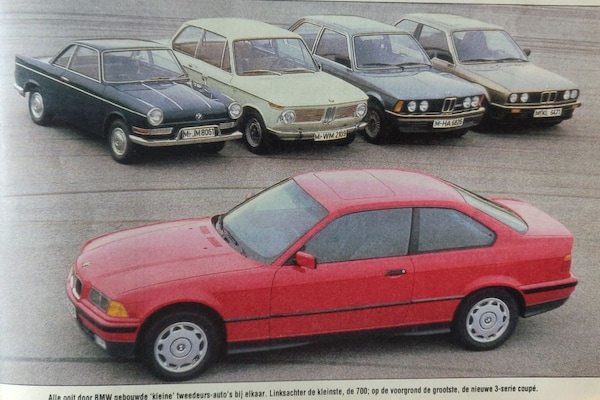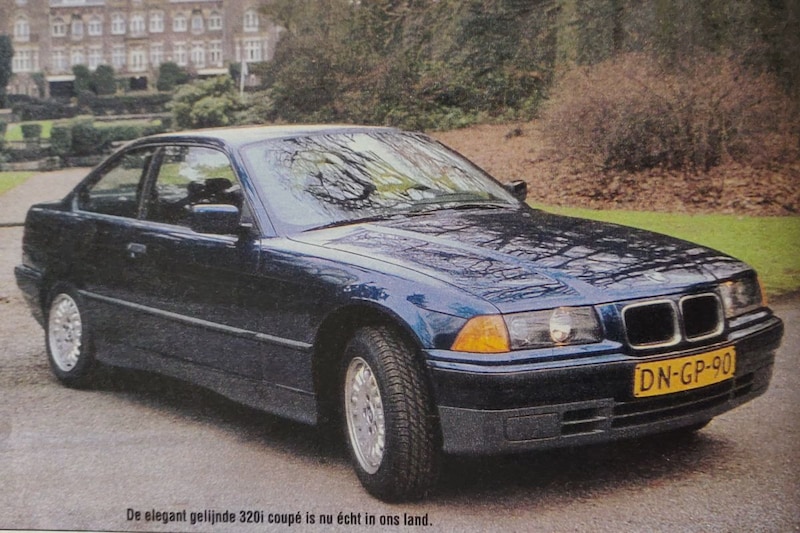In 1991 BMW pulled the curtain on the E36 generation of the 3-series. That was quite a step forward from the E30. We had to wait a while for the coupé version, but exactly 30 years ago we were finally able to take it on the road for the first time.
BMW currently demands quite a bit of attention on our website, with numerous updates for various models, including the 4-series. The latter is of course a direct descendant of the car we first drove exactly 30 years ago, the 3-series Coupé. In contrast to the last 3-series Coupé and later the 4-series, BMW took a relatively modest approach at the time when it came to the appearance of the two-door.
The 3-series Coupé E36 looked like two drops of water on the sedan in terms of lines, and yet BMW managed to make it a balanced designed and clearly more elegant model. Because of its more subtly sloping and lower roofline, the 3-series Coupé did not look like a traditional ‘two-door sedan’ as was the case with its predecessor. The term ‘Coupé’, which was used for the first time in this generation 3-series, was therefore appropriate.

BMW did more to distinguish the Coupé from the sedan, because the chassis of the Coupé was also tightened up a bit. That should make it feel even more sporty. However, this was not necessarily very apparent during our first kilometers by car. “…during an hour’s drive on Dutch back roads, this was not noticeable. BMWs are already very good on the road and such subtle differences are probably only noticeable in a direct comparison.”
What was noticeable (for the second time) was that BMW had really taken a big step with the E36 when it came to comfort. We are mainly talking about the peace and quiet on board. “Both the wind noise at higher speeds and the rumble of the wheels on a bad road surface are suppressed remarkably well in this car. An example of this is the special sealing of the door windows: when the door is opened, the window electrically lowers an inch out of its position. rebate and after closing the window slides up again and presses firmly into the recess of the rubber door frame.” Something that would become very common in coupes in the 90s, but which we could still really marvel at in 1992.

For the rest, it was now a feast of recognition in the 3-series Coupé, as we had already been on the road with the 3-series sedan. The modern dashboard appealed to us very much and also made an ergonomic impression. The strongest point besides the handling was what happened in the front. In the test car, a 320i Coupé, was the wonderfully smooth 2.0-liter six-in-line that debuted two years earlier in the 5-series and was also available in the regular 3-series. That made the car smooth, but not overwhelmingly sporty. ‘Restrained potential’, that’s the best way to describe driving. Later, of course, the 328i and certainly the M3 would show that it could really be a killer.
Incidentally, we could not yet decide whether you really got a lot more with the 320i than with the 318i. Although the six-cylinder naturally sounded better and ran more refined, the 1.8 four-cylinder could keep up well, we found: “The slight difference between the 1,800 and two-litre engines is remarkable; this has to do with a number of recent improvements that have made the 1.8i a 1.8. have made.” BMW had given that engine, among other things, a manifold with a variable volume, which ensured a better dosed power and torque build-up. In addition, the 1.8is was more powerful than the 1.8i (140 hp versus 113 hp). The engine would only be available later in the regular 3-series and so the 3-series Coupé even ran ahead of the troops.

If you still own a 3-series Coupé of the E36 generation and it is as original as possible, it is wise to be careful with this. They are now becoming quite rare, not least because many have ended up in the hands of racers, drifters or tinkerers. You will unfortunately no longer encounter the specimen in the main photo, unfortunately it has disappeared to the eternal rust fields in 2013.
– Thanks for information from Autoweek.nl
